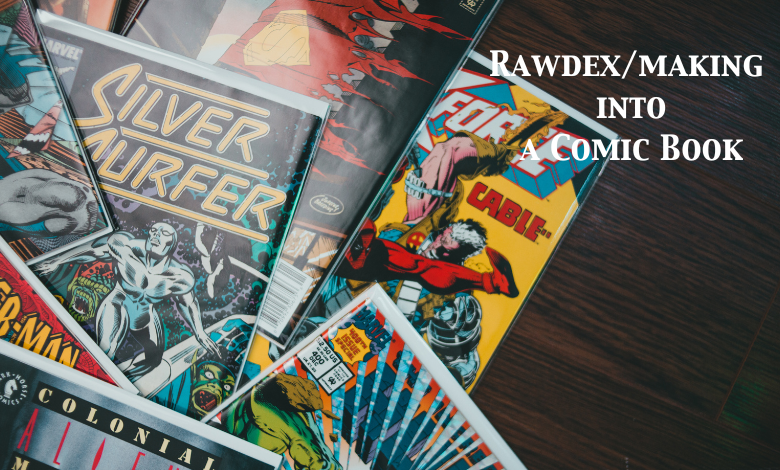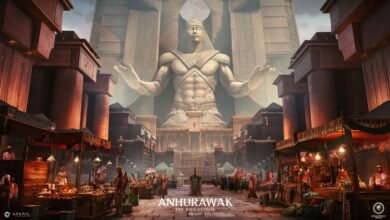Rawdex/making into a Comic Book

Rawdex, a fusion of compelling characters and a richly detailed universe, is more than just a creative idea—it’s a narrative world waiting to leap off the page and into the minds of readers. This article delves into the fascinating process of transforming the Rawdex concept into a fully realized comic book, from initial planning to the final product.
Step 1: Laying the Foundation
Understanding the Core of Rawdex
Before beginning, it’s vital to identify the core elements of the Rawdex story. What makes it unique? What themes resonate throughout the narrative? Whether it’s a tale of epic adventures, a sci-fi dystopia, or a fantasy epic, grounding Rawdex’s identity is crucial.
Key questions include:
- Who are the protagonists and antagonists?
- What is the central conflict?
- How does the Rawdex universe stand apart from similar stories?
World-Building for the Rawdex Universe
Rawdex thrives on its immersive setting. World-building should include:
- Geography: What are the key locations? Are there unique terrains, cities, or alien worlds?
- Culture: How do societies function? What languages, traditions, and histories exist?
- Rules and Lore: Establish rules for magic, technology, and the governing systems of the Rawdex universe.
Step 2: Writing the Script
The Structure of a Comic Script
Unlike traditional prose, a comic script needs a visual and dialogic balance. Each panel conveys a piece of the story, supported by artwork.
- Page Descriptions: Describe what each page should depict.
- Panel Breakdown: Detail the action, emotions, and characters in each panel.
- Dialogue and Captions: Write clear, engaging dialogue that complements the visuals without overcrowding the panel.
Plotting Rawdex: The Beginning, Middle, and End
A well-plotted script ensures that Rawdex engages its readers.
- The Hook: Begin with a scene that instantly grabs attention—perhaps a thrilling chase or an emotional revelation.
- The Build-Up: Introduce the main conflict and characters gradually, layering tension.
- The Climax and Resolution: Deliver satisfying payoffs while leaving room for sequels or expansions.
Step 3: Designing Characters
Visualizing Rawdex’s Heroes and Villains
Characters are the heart of any story, and their designs must reflect their personalities and arcs.
- Protagonists: Should be relatable yet aspirational.
- Antagonists: Complex villains make for compelling conflicts.
- Supporting Cast: Round out the universe with diverse, memorable characters.
Collaborating with Artists
Artists bring the Rawdex characters to life. Share detailed character descriptions, mood boards, and sketches to align on the vision. Provide feedback and encourage creativity to ensure characters pop on the page.
Step 4: Crafting the Artwork
Defining the Art Style
Rawdex’s art style sets the tone of the comic. Decide on the style early, whether it’s:
- Realistic: Highly detailed and lifelike.
- Cartoonish: Exaggerated and vibrant.
- Stylized: A mix of bold lines, unique color palettes, or experimental techniques.
Storyboarding and Thumbnails
Work with the artist to create rough layouts of each page. This stage defines:
- Panel Layout: How action flows visually from one panel to the next.
- Emphasis Points: Scenes or panels that need extra attention to detail.
Step 5: Coloring and Lettering
Choosing the Right Colors
Colors evoke emotion and set the mood for Rawdex.
- Use bold, contrasting colors for action scenes.
- Employ muted tones for somber or suspenseful moments.
Lettering for Impact
Effective lettering ensures the story’s readability and emotional weight. Choose fonts and text placements that align with the tone. Consider custom fonts for unique characters or sound effects.
Step 6: Publishing the Comic
Deciding on the Format
- Print Comics: Traditional and tangible, but with higher production costs.
- Digital Comics: Cost-effective and accessible globally.
Finding a Publisher
Explore options like:
- Traditional Publishers: Submit pitches to established comic publishers.
- Self-Publishing: Maintain creative control and publish independently.
Marketing and Distribution
A well-executed marketing plan ensures Rawdex reaches its audience.
- Social Media Campaigns: Share teasers, artwork, and behind-the-scenes content.
- Crowdfunding: Platforms like Kickstarter can raise funds and build a fanbase.
Step 7: Engaging with Fans
Building a Community
Engage with fans through social media, Q&A sessions, and live events. Building a loyal fanbase can lead to sequels, merchandise, and even adaptations.
Challenges and Lessons
Overcoming Creative Roadblocks
- Collaborate closely with your team.
- Revisit the core themes of Rawdex to stay inspired.
Balancing Costs and Vision
Budget constraints can limit creativity, but strategic planning and crowdfunding can fill gaps.
Conclusion
Turning Rawdex into a comic book is a journey that requires vision, collaboration, and perseverance. With its rich world and dynamic characters, Rawdex has the potential to captivate audiences worldwide. Whether you’re a fan or creator, this process is as rewarding as it is challenging.



